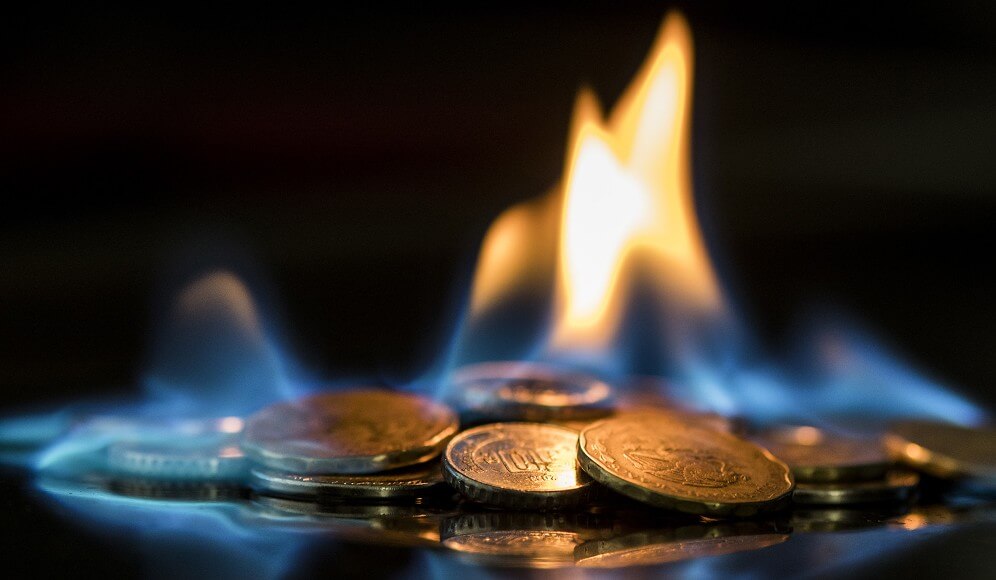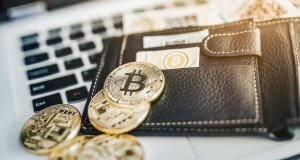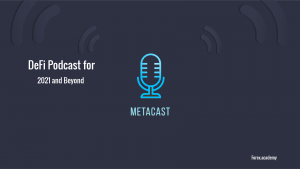The crypto adoption juggernaut rolls full steam ahead. You need only look at the increasing number of outlets accepting crypto payments to prove this. Even governments that once approached them with cynicism have caught on to the act. The big migration to CBDCs is now a matter of time.
Whereas the growing acceptance is positive, it comes with its misgivings. Although the proliferation of coins and tokens expands choices, it raises concern about sustaining cryptos’ value within the cryptosphere.
Cryptos are good at mitigating inflation, but they’re not immune to it. Crypto projects have had to devise the means of controlling this. As such, coin burns have been the tool of choice. But what are coin burns? How does one execute them? Importantly what is their value? Stick around as we go deep into the subject.
What Is Coin Burning?
Coin burning is the process of removing a set volume of cryptos from circulation. In doing so, developers and miners reduce their total supply.
Eater Addresses/ Blackholes
Coin burning entails sending cryptos to public addresses with unobtainable private keys. Also known as eater addresses or blackholes, these addresses render the coins useless. Nevertheless, they allow for their public viewing and peer verification on the blockchain.
Coin Burning Varies With The Project
Depending on the frequency of the coin burning process, we can classify it into two broad categories:
- One time burns – are one-off coin burns popularly embraced by ICO projects to clean the market of unsold coins.
- Periodic Burns- these are undertaken repeatedly at either fixed or varying intervals; Binance holds quarterly coin burns while Tether does so per withdrawal or collection
What are The Approaches to Coin Burning?
There are two major approaches to coin burning. These are:
- Mechanisms relating to the token’s blockchain protocol
- Mechanisms driven by economic sense
Protocol Related Mechanisms
In this category, we have coin burning mechanisms embedded in the project’s core protocol layer. We may divide these into two main groups.
- Proof of Burn Mechanisms
- Anti Spam mechanisms
i) Proof of Burn Mechanisms
These use the Proof of Burn (PoB) consensus that requires miners to prove that they’ve burnt some of their coins. PoB has several variants:
- Burning Native Coins for Mining Rights- miners must burn some of their coins to acquire block mining rights; an example is Slimcoin.
- Burning Bitcoins to Create New Native Coins- projects like Counterparty (XCP) use PoB that burns BTC in exchange for a similar value of coins in the native currency, XCP
- Burn-And-Mint Equilibrium: an advanced version of PoB used by Factom (FCT) that burns native tokens in return for Entry Credits for storing data on its blockchain
ii) Anti Spamming Mechanisms
Introducing a cost to transactions prevents spamming and DDOS attacks that compromise the network. Projects like Ripple (XRP) and Request Network (REQ) integrate a burning mechanism for every transaction on their network. Though indirectly, their Users ‘incur’ the cost of trading on them. The ecosystem gains in value resulting from a reduced supply of native coins.
Mechanisms Driven By Economic Sense
These are mechanisms informed by a project’s economic considerations. They may be one-offs or periodic.
i) Mopping up of The Unsold ICO Tokens
At times ICOs fail to meet their hardcaps. Consequently, remain with unsold tokens. The projects may decide to destroy these to maintain their credibility.
ii) Paying out Dividends to the Coin Holders
Profitable projects may use their profits in buying back their native coins from the public. They then destroy the repurchased coins, thus paying them some dividend, which increases the value to coin holders.
What are the Steps Followed in a Coin Burning Event?
The coin burning event follows a sequence of four steps. Here’s its breakdown:
- Institution of the burn function- the coin holder starts by calling the burn function, indicating the number of coins they intend to burn.
- Verification of the coins for burning- The contract proceeds to determine the ownership and validity of the selected coins, considers positive numbers only
- Abortion of the burn function- The process aborts if the instigator has fewer coins or uses a negative value or zero.
- Execution of the Burn function- the smart contract withdraws the sums from the instigator’s wallet, permanently cutting them from circulation
Why do Crypto Project’s Institute Coin Burns?
You’d think that coin burning is beneficial. Wouldn’t you? After all, you have Key players like Binance and Tether performing them. What then are its benefits
i) Appreciation in the Crypto’s Value
Cryptos are decentralized. In essence, market forces determine their prices. Coin burning depletes the sum of coins serving the market. As a result, their value rises to attain equilibrium. The attainment of market equilibrium is essential in stabilizing the price(value) of the crypto.
ii) Ensuring Network Stability
As stated elsewhere in this article, coin burning is key to eliminating Spam and DDOS. Accordingly, the network becomes stable.
iii) To Mop Up The Unsold Tokens From an ICO or Token sale
Crypto projects initiate ICOs to get public buy-in. Towards these, they set aside a certain percentage of the coins hoping that the investors will acquire the whole lot. However, things don’t always go that way, resulting in a remnant of those coins.
iv) Winning Investors’ Trust
The token insurer burns the coins remaining unsold from the ICO. They do this to ensure a level playing field for all investors. Were the issuer to keep the unsold coins, they’d have a massive advantage over other investors. Coin burning helps win the trust of other investors and incentivizes their stay within the project.
A case in point is the Neblio cryptocurrency. Its team burned 122 million tokens that remained from their ICO. It sent them to an unspendable NEBL address.
v) Correcting Errors in Coin Issuance
At times projects realize errors in the creation of their tokens or coins. As such, they turn to coin burns to remedy this situation. A case in mind is Tether. The company realized that it had erroneously produced $ 5 Billion USDT. It resorted to a coin burn to maintain its 1:1 peg to the USD. Allowing the extra coins to stand would have destabilized the ratio.
vi) Guaranteeing The Developers’ Commitment to the Project
Coin burning signals the Developers’ commitment to the project. Look at it this way: the coin burn reduces their supply. At the same time, it increases the value of the coin or token in question. Burning is indicative of the developers’ desire to see the project grow in value and network function.
vii) Reduction of The Competition Between Miners
The Proof of Burn (PoW) consensus is a popular offshoot of coin burning. Through it, a user destroys their coins to gain mining rights.
Managing Mining
PoB matches the number of blocks a miner can verify to the volume of coins they burn. This way, one’s mining ability increases with increased burning. Thus it reduces the number of miners and competition for resources between them.
Leveling the Playing Field Through Decay Rates
Since PoB favors the large-scale miner, they employ decay rates. This feature reduces one’s mining capacity with every verification. For them to remain profitable, it compels them to invest in more tokens to burn.
Final Thoughts
Although touted as the fix against inflation, cryptos aren’t immune to the same. Consequently, projects have had to find ways of guarding against it. Their default method has been the institution of coin burning: the deliberate removal of a given amount of coins from the market. It may be a one-off event or a periodic undertaking. Additionally, it could be a procedure hardwired into the project’s core protocol layer or driven by economic consideration. Whatever the cause, coin burning is an essential undertaking that, among other positives, infuses stability and confidence in any crypto project.





